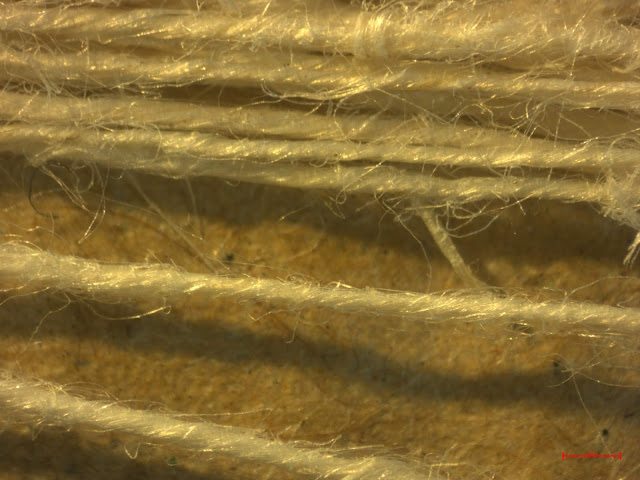With all the parameters outlined for the experiment design and the research question formatted to be a suitable hypothesis for the experiment, now came the hard part: how does it all 'work' together? Within every experiment, there are several small decisions made as part of this process. For all the preparation made prior to beginning, there will inevitably be contingencies you did not entirely account for.
For example, I decided to begin the warping process by making a tablet woven starting band, performed in the manner as seen by the Lapp weavers from Norway (Hoffman, 1974). To produce their wadmal and grene, they often wove a starting band while simultaneously integrating the warp. Not all weavers that Hoffman studied performed this method, but it does have archaeological presence in other parts of Europe.
I planned for as many of the possible contingencies I could think of that might go wrong. So, I made sure I had plenty of time to warp. I also had my assorted tools, including scissors, a needle, and my cup of water (for drinking!). I measured my warping pegs on my Kromski Harp loom (32") to confirm that I would get the correct length for my warp (side note: I have no idea how Iron Age people dealt with their warping problems, but this works for the experiment). My tablets (made of thick cardstock) were threaded with the same linen and stretched between two warping pegs. Then I began weaving and warping. After about 10 warps (or five times around the setup), I quickly realized that I wasn't going to achieve the correct density of warp threads I needed. Not even by a long shot!
I had a contingency for which I had no plan. I ended up unweaving everything, calling in my partner to help me (how much 'help' did any individual receive during Iron Age textile production?!), crying, and feeling hopeless. I was time pressed and didn't know how smoothly the rest of the experiment would go if I was already waylaid early on in the process. But, you adapt to adversity. I decided that no matter how I set up the tablet band, the way the cards turn prevents you from achieving a dense weaving setup. How can I get the density I wanted and also get the warp threads onto the loom?
Let me back up to describe what I wanted the setup to be for the warp tension. After deciding on the loomweight shape and mass, and the spindle and spun yarn I needed, I had to calculate the warp tension for the setup. To keep the tension per thread no higher than 30g per thread, I determined that this would result in 72 threads per loomweight, or 144 threads for the woven fabric (tabby weave setup). This warp tension of 30g was determined by the Center for Textile Research (CTR) experiments to be a suitable upper limit for optimal weaving with wool. Why 72? The CTR experiments also determined that the starting width of your setup should be approximately equal to the total width of your loomweights (again, for optimal weaving). For a 2kg loomweight and a goal of 30g of tension per thread, that meant 72 threads (of about 0.9mm maximum gauge) would be ideal. This is tricky because there's a point where you can't get the warp threads so close that they either overlap or their fiber halo (more prominent in wool threads than in linen threads) causes them to stick and abrade as weaving commences. I spun a yarn that was about 0.7mm and bought a yarn that was similar in gauge (0.6-0.8mm).
 |
| Here is my handspun linen that I used as a test. I photographed this with a camera mounted onto a stereomicroscope. (That's why it is a little fuzzy) |
I decided that it would be good to start the experiment at this known upper limit when testing the linen because I could more easily link this back to wool and the other experiments conducted previously. But I was still stuck at this point where I needed to have a dense warp setup and didn't know how else to get the experiment going. I did the next best thing, which was 'fake' it. And I know that sounds a bit unscientific, but this particular problem was unimportant for the main question I was looking at since a starting band was not the focus. I had assumed that I should start with a tablet woven border, but there is no archaeological evidence for this in my case study sites. By removing this assumption, I could deal with the problem of getting the correct warp density I needed.
Continued in Part 3!

No comments:
Post a Comment